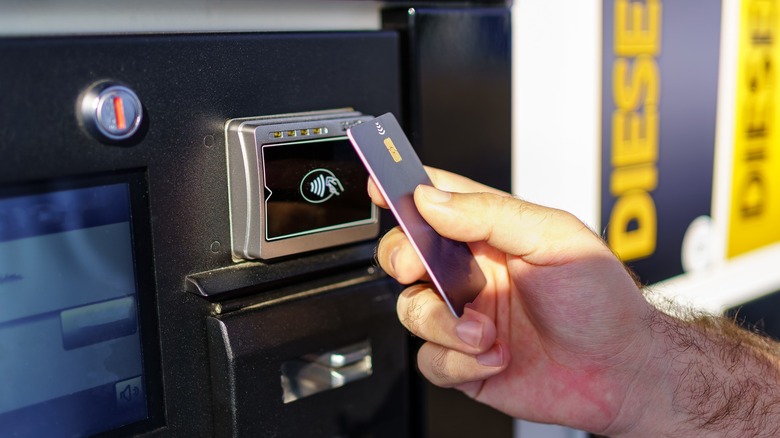How Long Do Debit & Credit Card Gas Station Holds Last? (And How To Avoid Them)
Paying for gas at the pump with a credit or debit card is a convenience that saves us time while performing one of life's little chores. While spotting a gas pump card skimmer before it steals your data may be your biggest concern during your fill-up, having a gas station hold placed on your card can also make it feel like you've been robbed.
Before paying at the pump was the norm, consumers would go inside to pre-pay for a specified amount of fuel, or gas stations might allow their customers to fill up on the honor system, and pay afterward. A gas station hold is a method used by retailers to ensure the debit or credit card being used is valid and has enough available money to pay for the fuel being dispensed.
These pre-authorization holds can be as little as $1, just to verify the card is active, or up to $175, to ensure it's capable of covering the cost of the fill-up. Larger holds can become problematic for those on a tight budget, especially if they last for more than a few hours. Some gas station holds can last for days, while others are released almost immediately as the actual charge amount goes through.
How to avoid gas station holds on debit and credit cards
One of the best ways to avoid gas station holds on your debit or credit card is simply to not use them to pay for fuel at the pump and use cash instead. Unfortunately, that means you'll have to go inside to pay for a specified amount of fuel up front, making it difficult to calculate how much gas you'd need to completely fill your tank. At least you wouldn't be tempted to overfill your tank, which could be a huge mistake. While pre-paying with cash for your gas is a surefire way to avoid the gas station hold, you can also avoid it by asking for a specific amount, in gallons or dollars, when paying with a card. Beware that while some gas stations will let you fill your tank when you pay inside with a card, they might place their normal hold on it.
Sometimes, gas stations will post signs explaining their debit and credit card hold policies so you can plan around them. Otherwise, you could go inside and ask the clerk or manager about them. However, the information gleaned from them could be wildly inaccurate. Another strategy for managing the impact of these holds is to find a conveniently located station with a low-figure hold amount that's acceptable to you, through trial and error, and then keep using it. However, their hold policy could change at the most inopportune time, leaving you in a tight spot.

